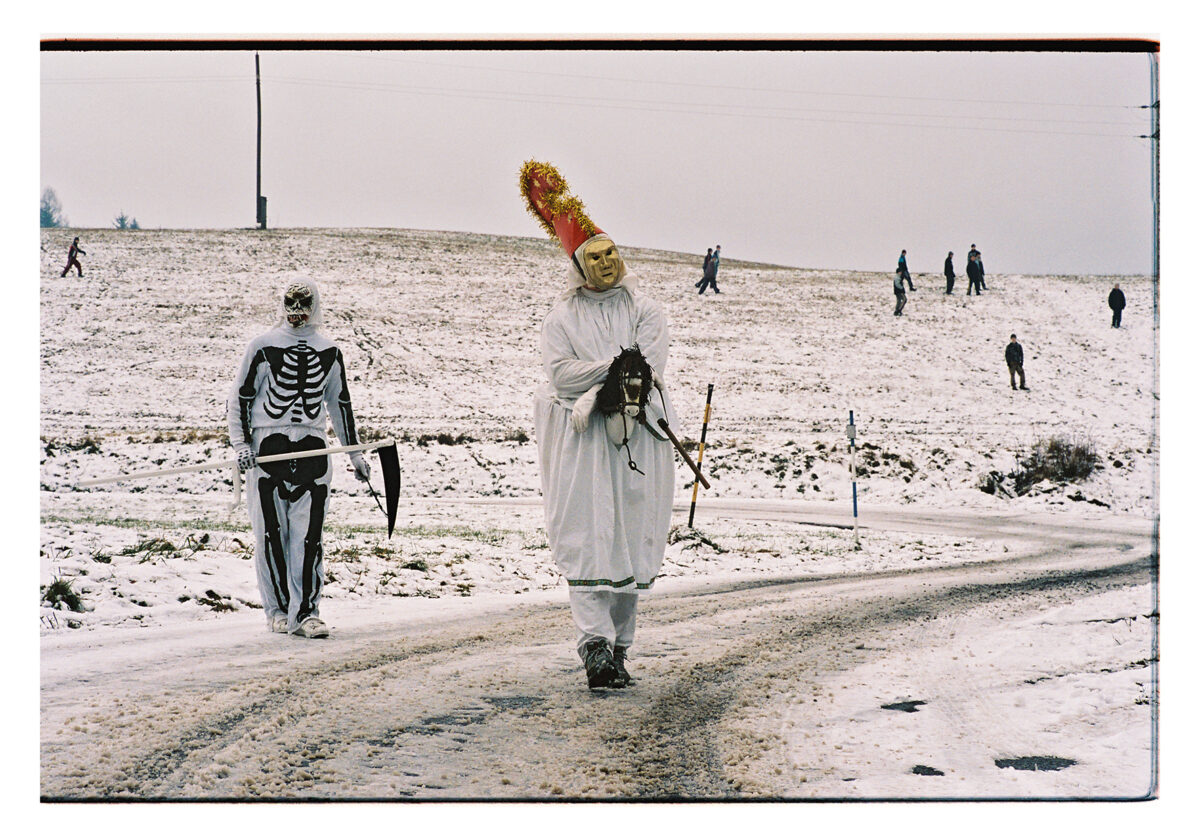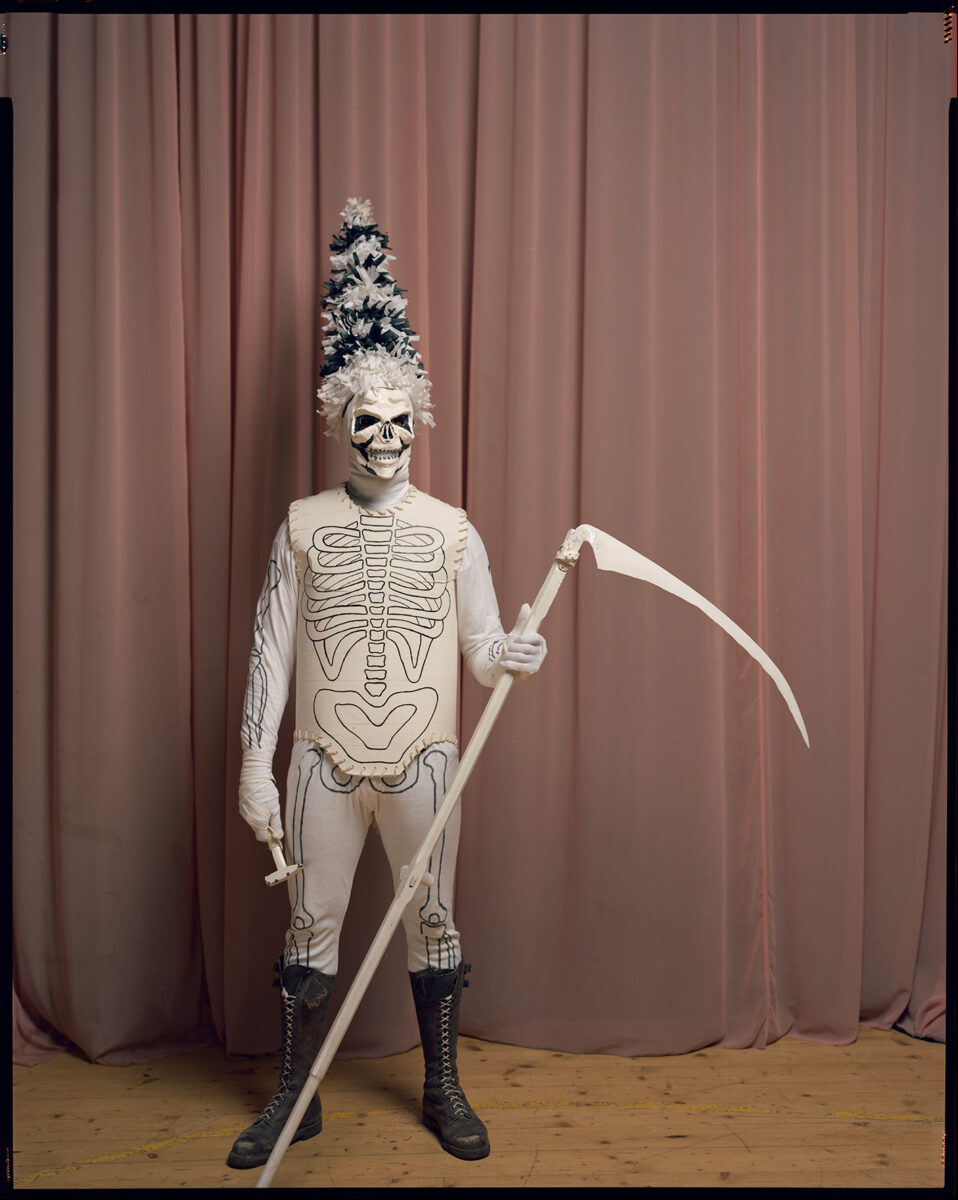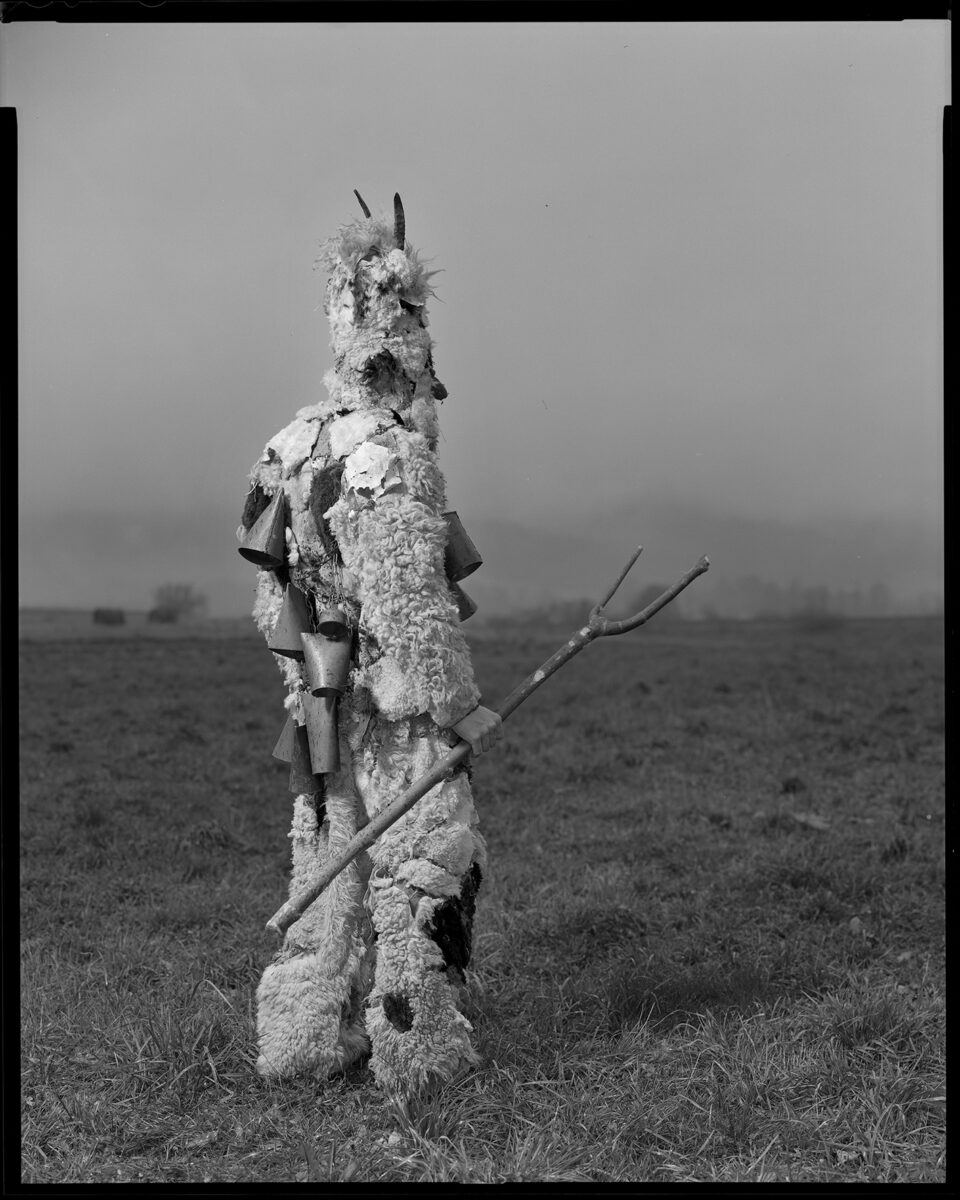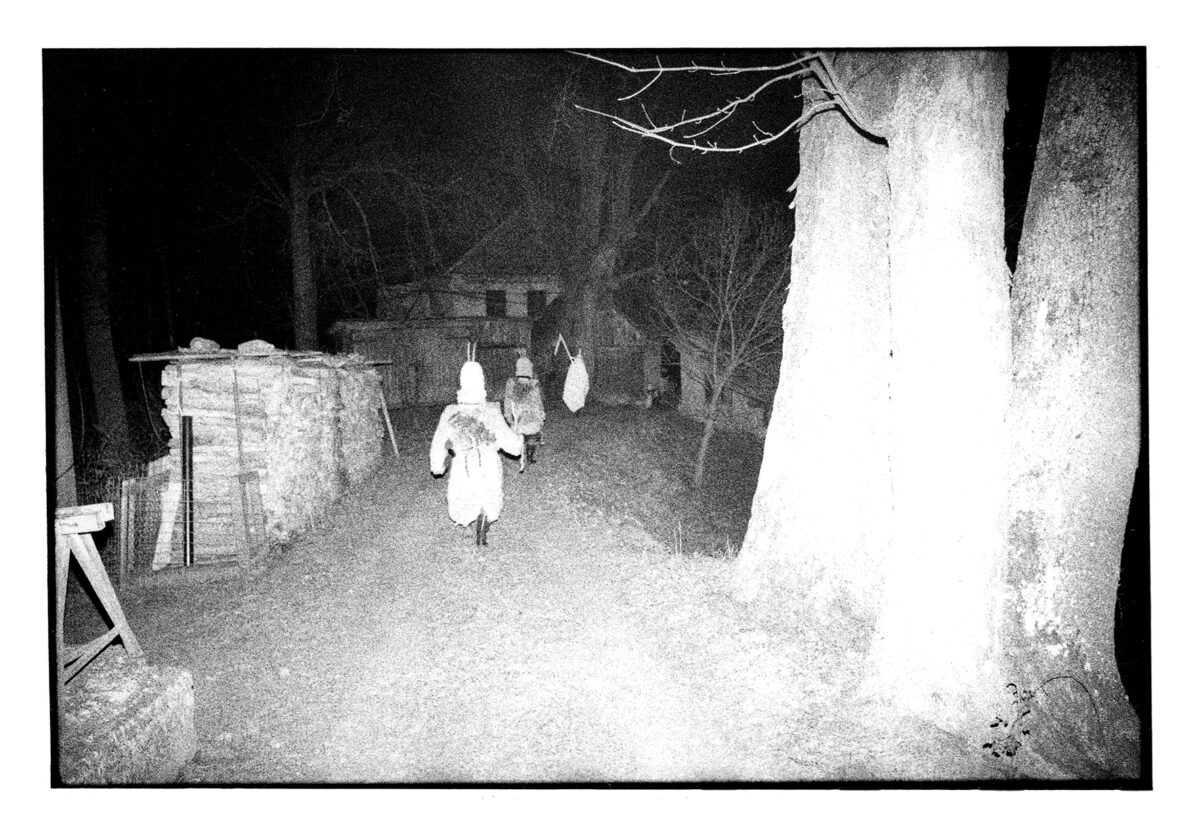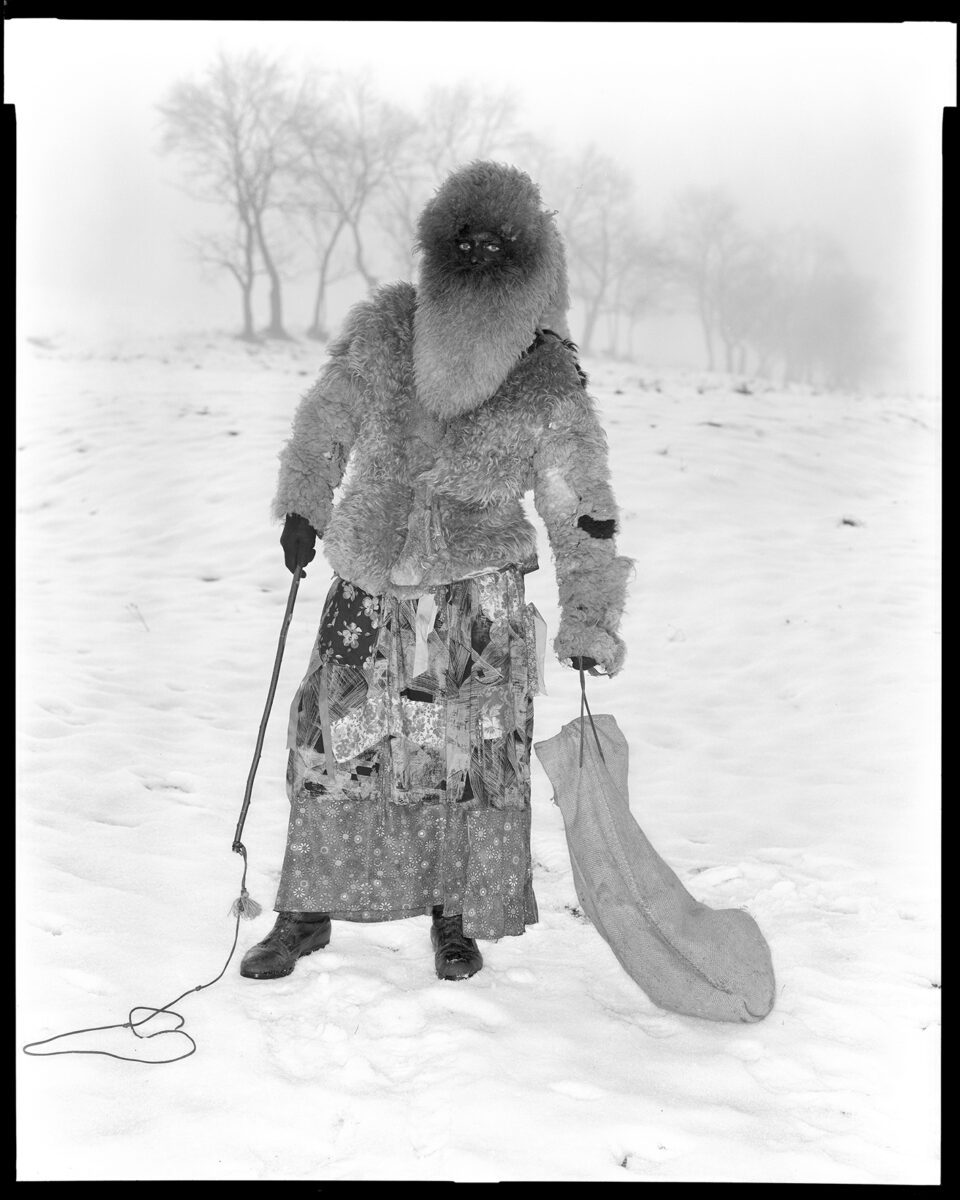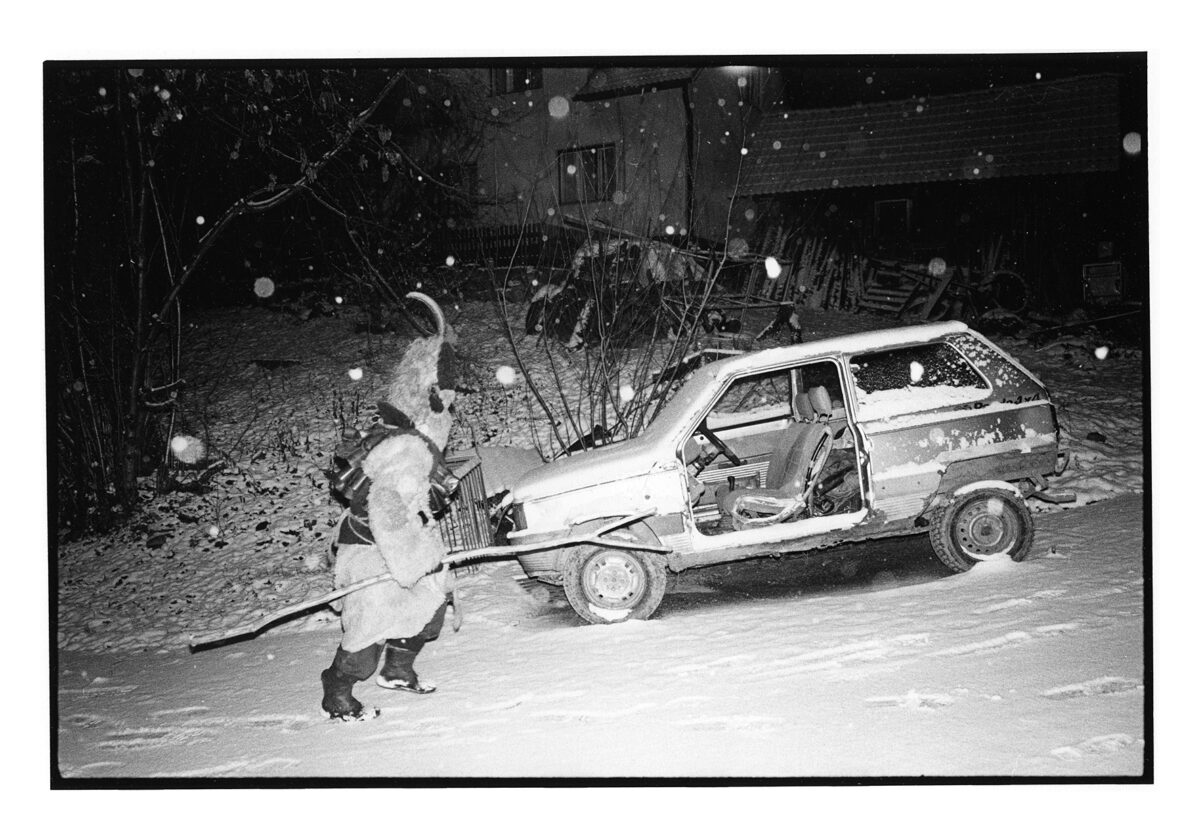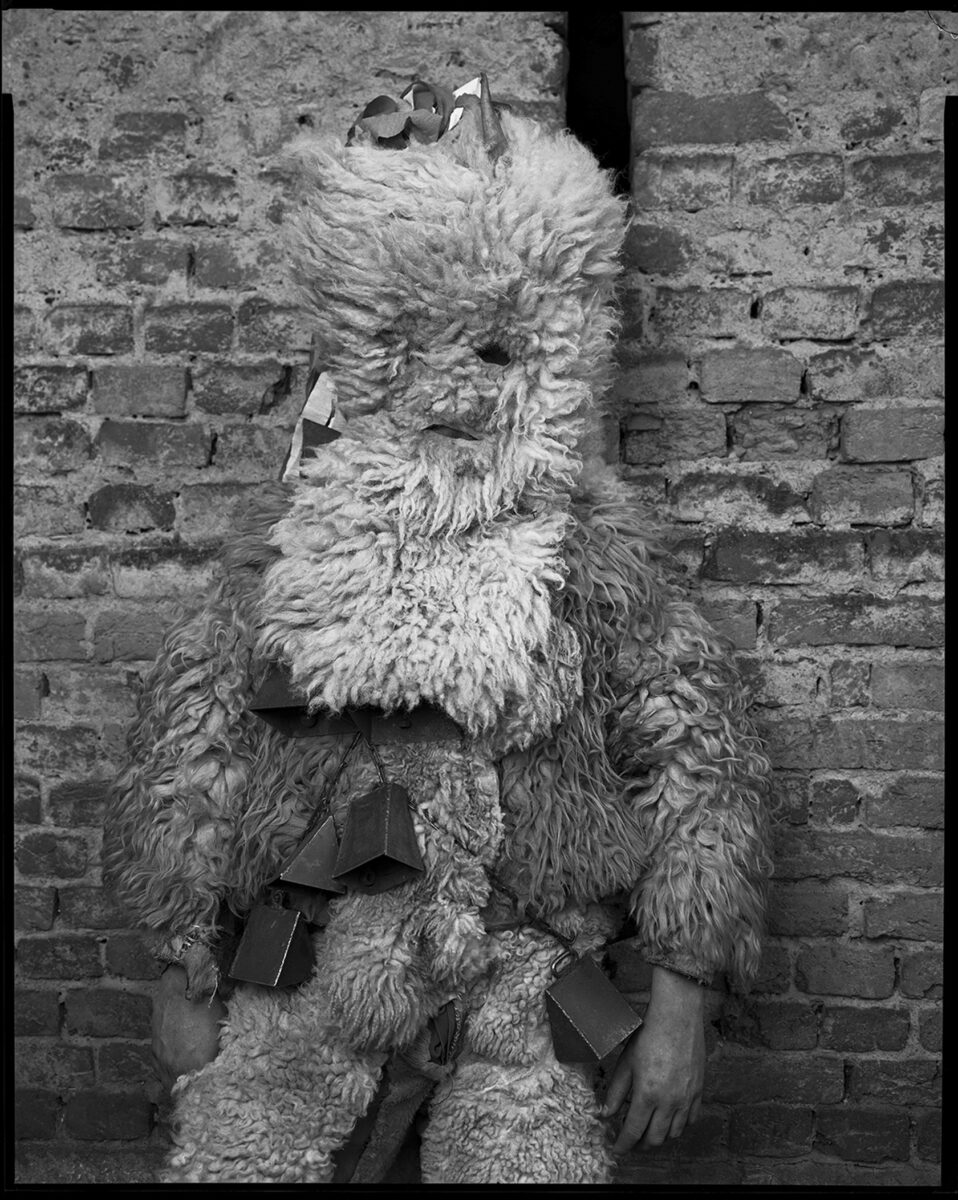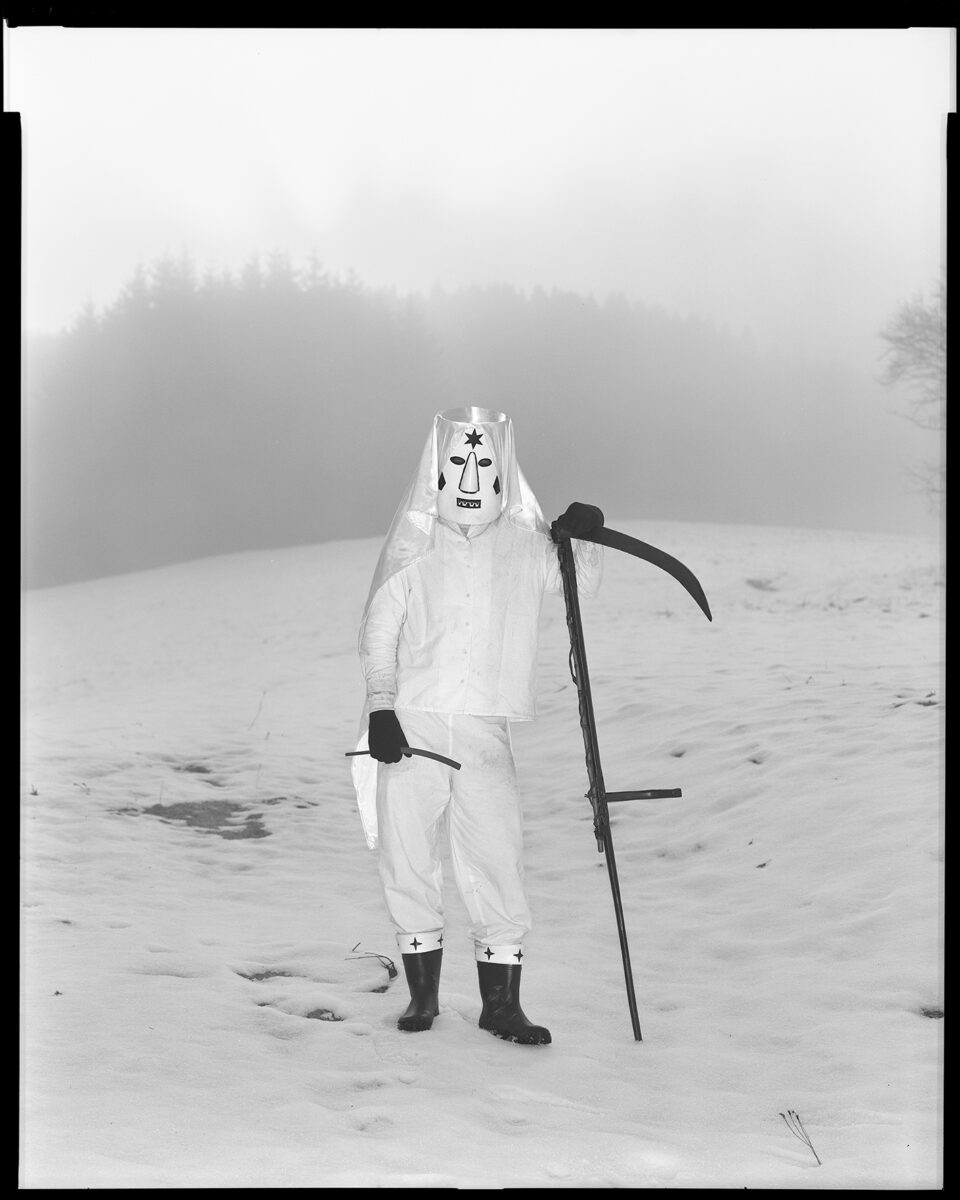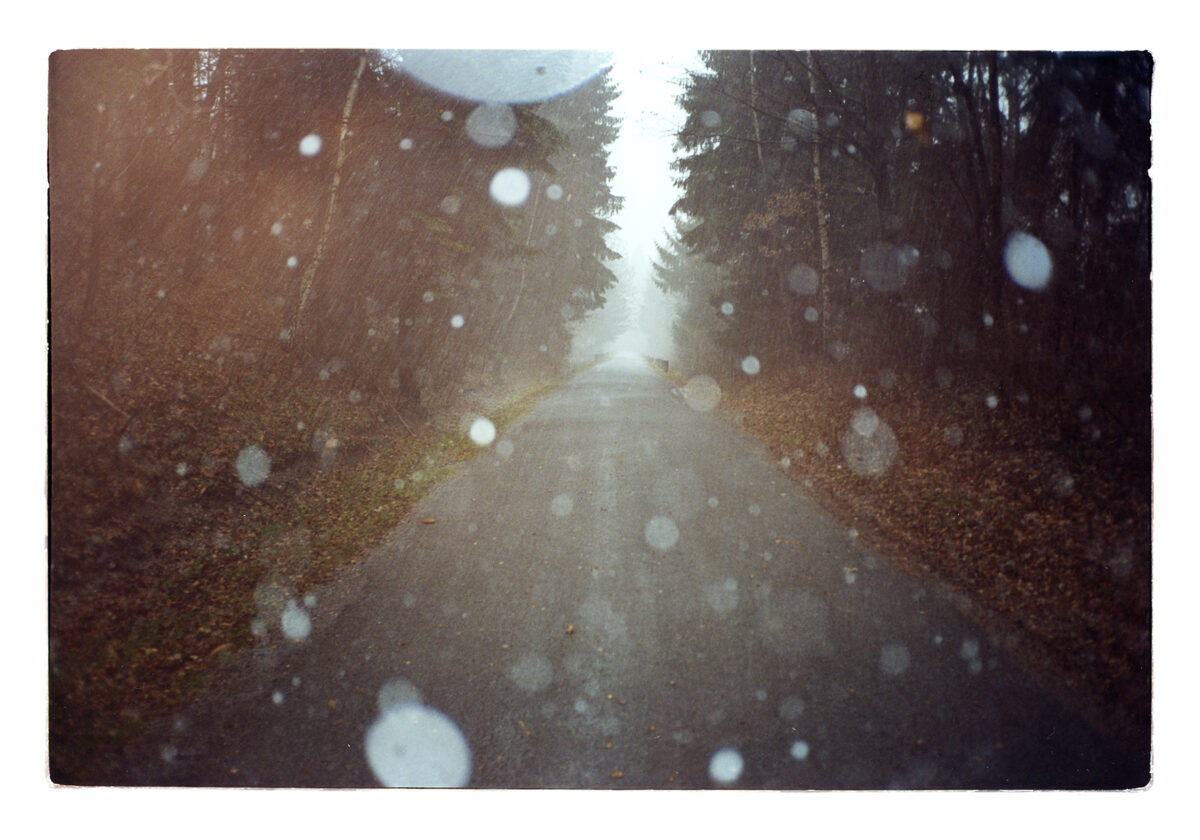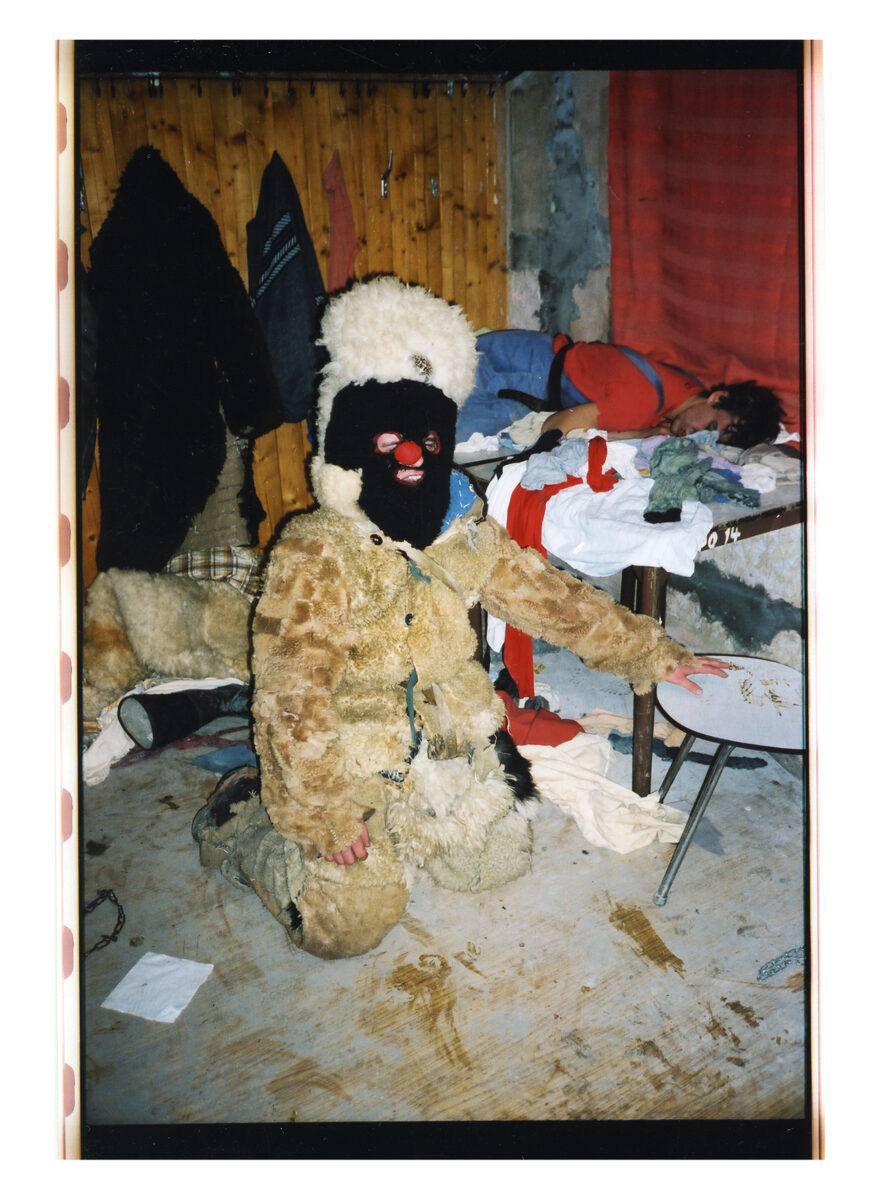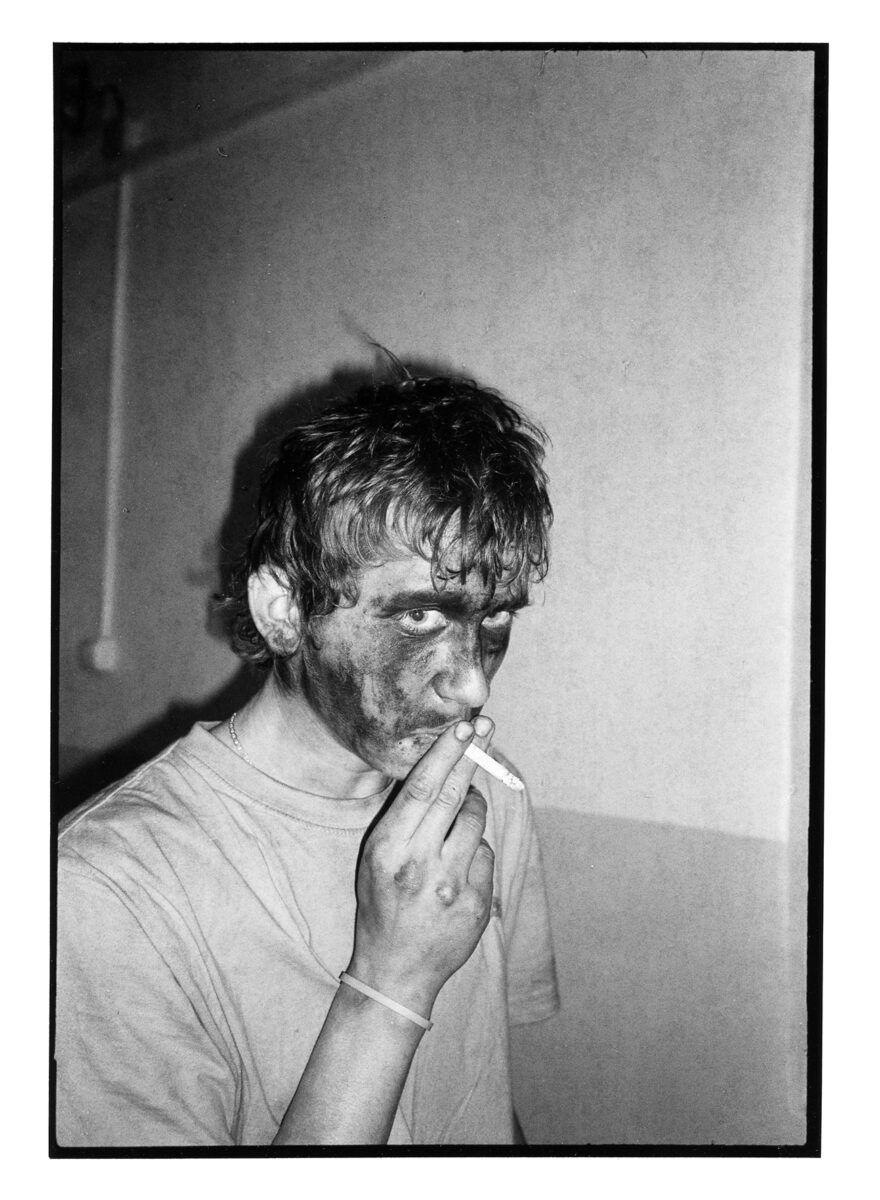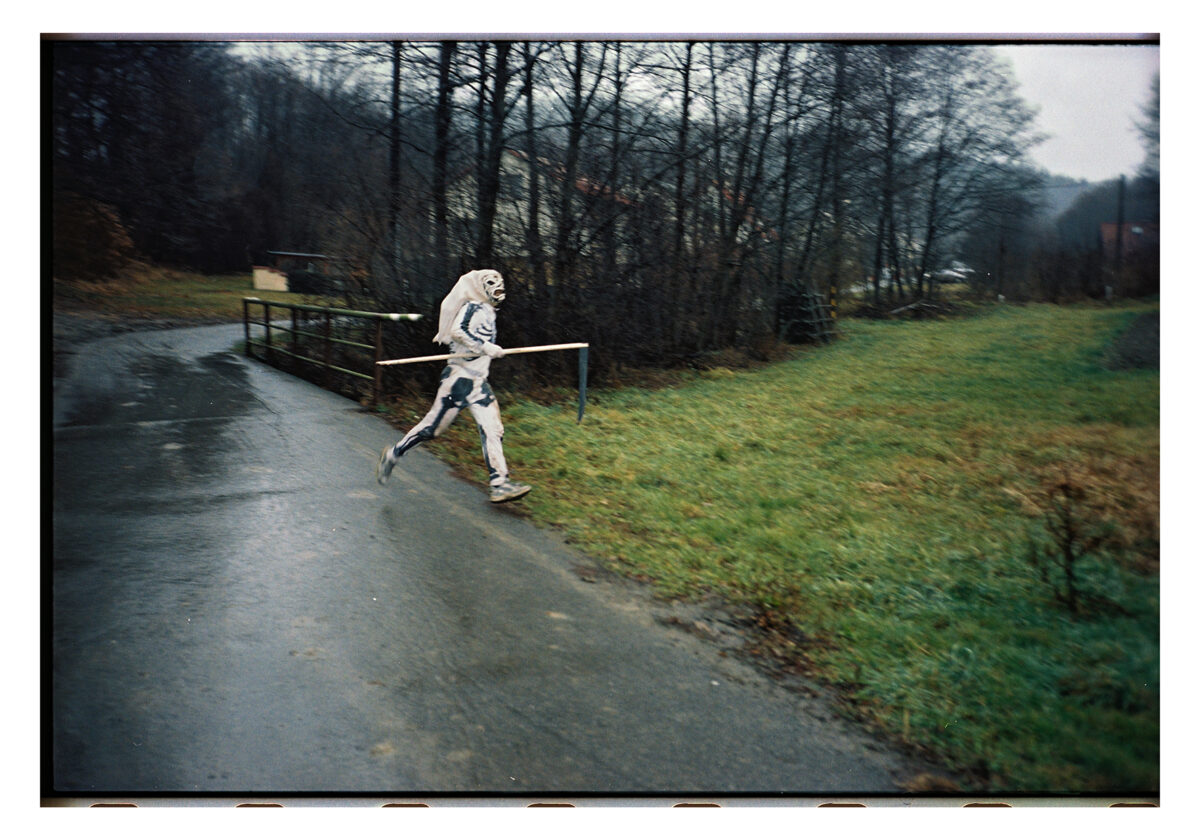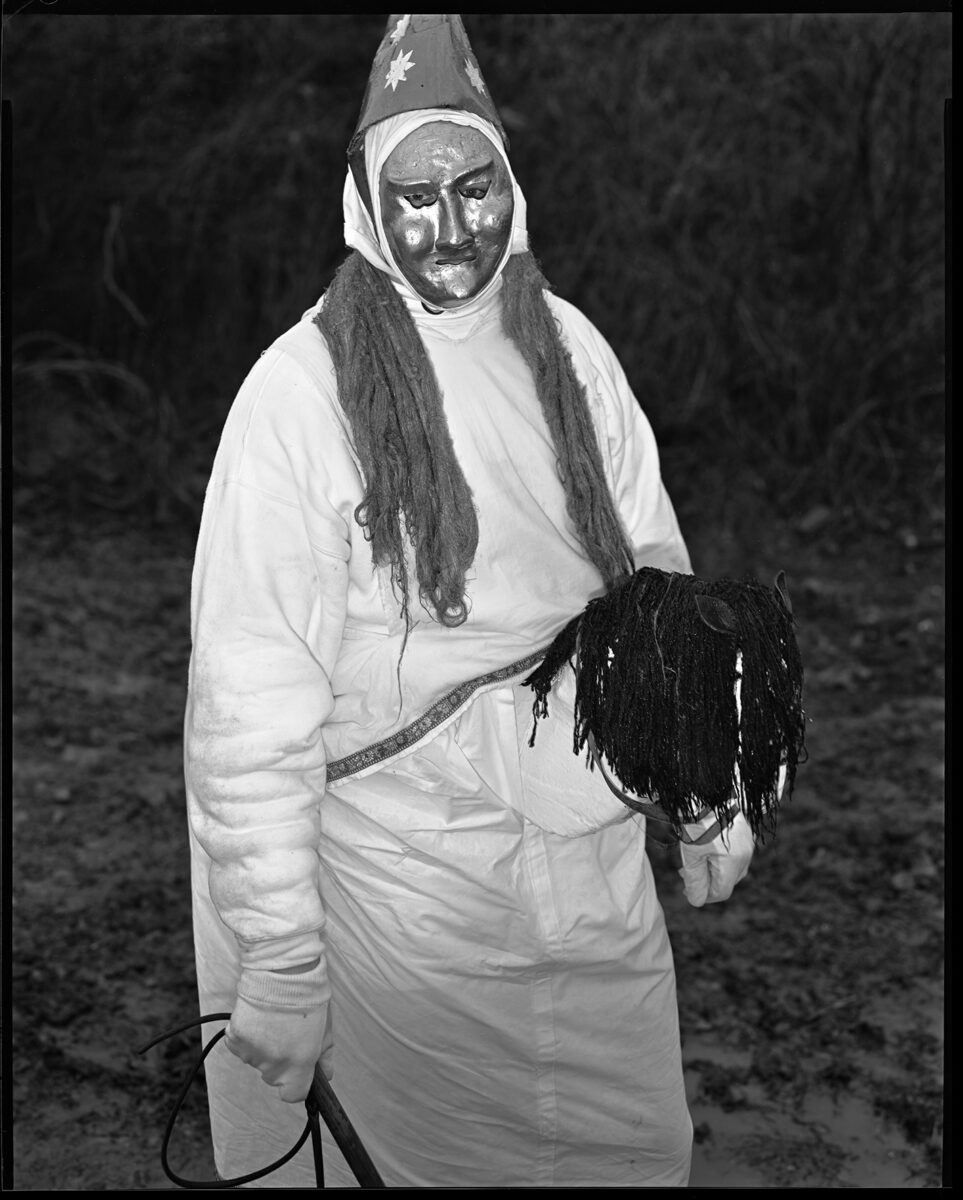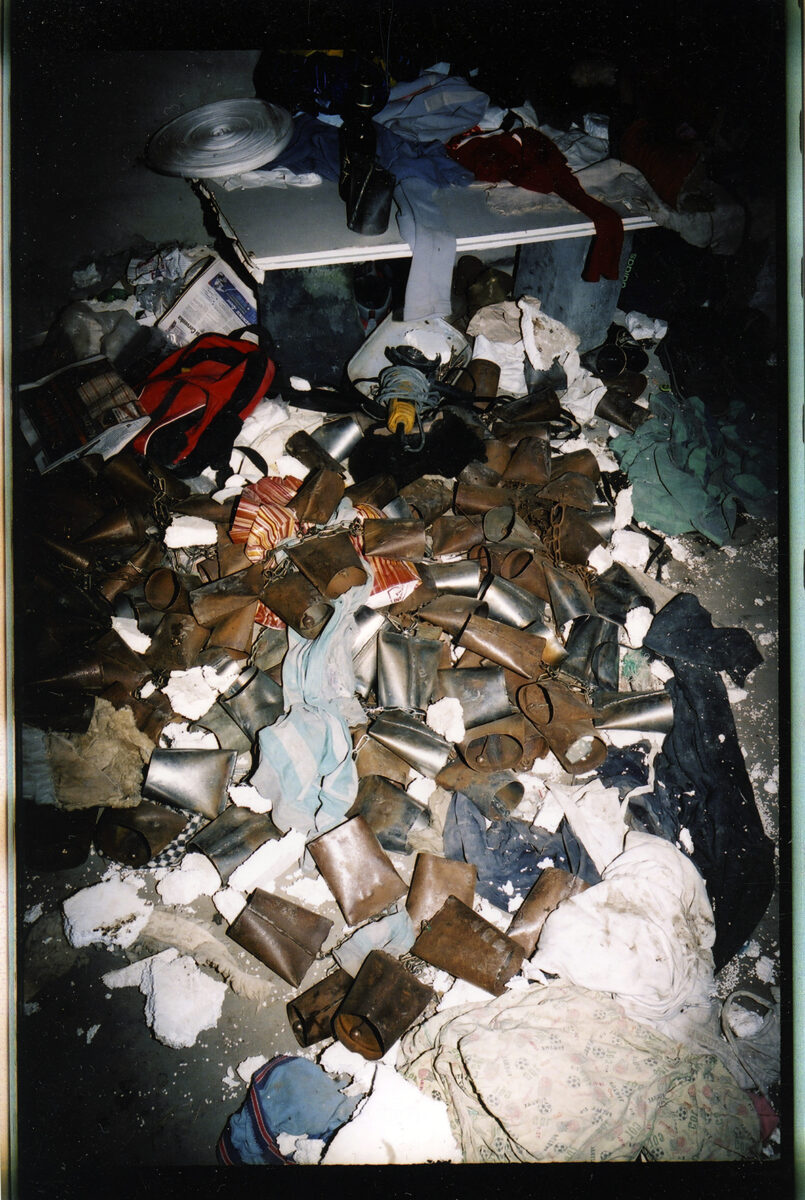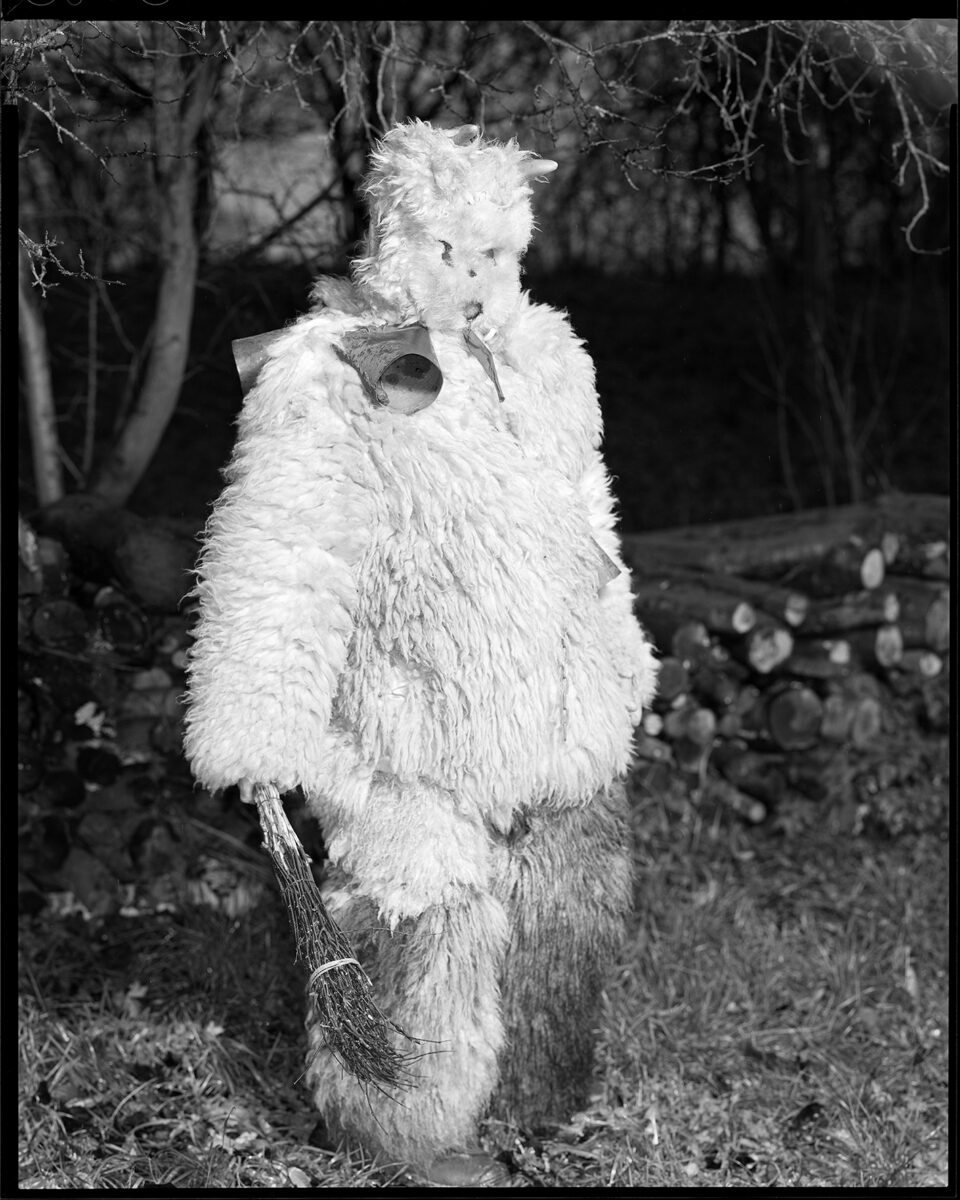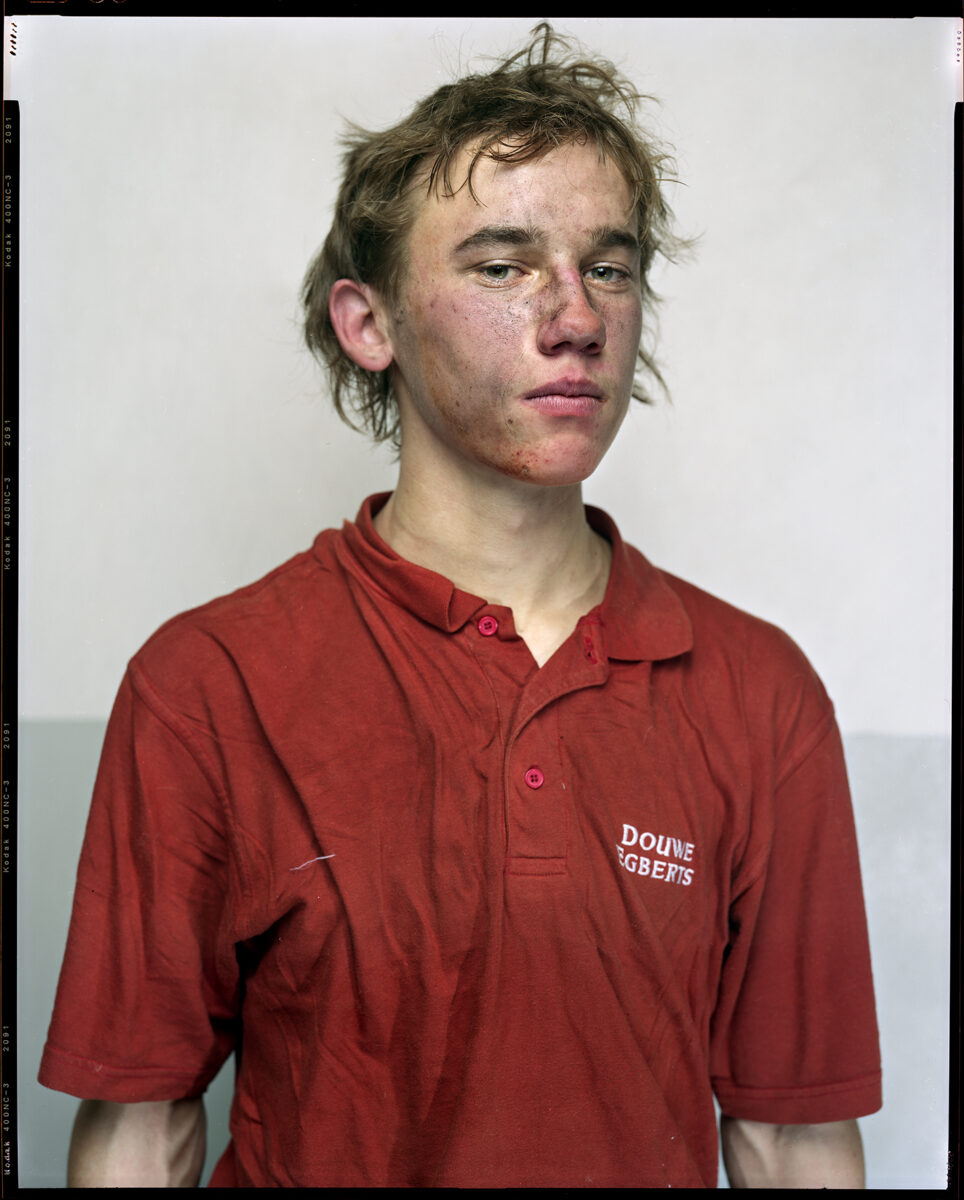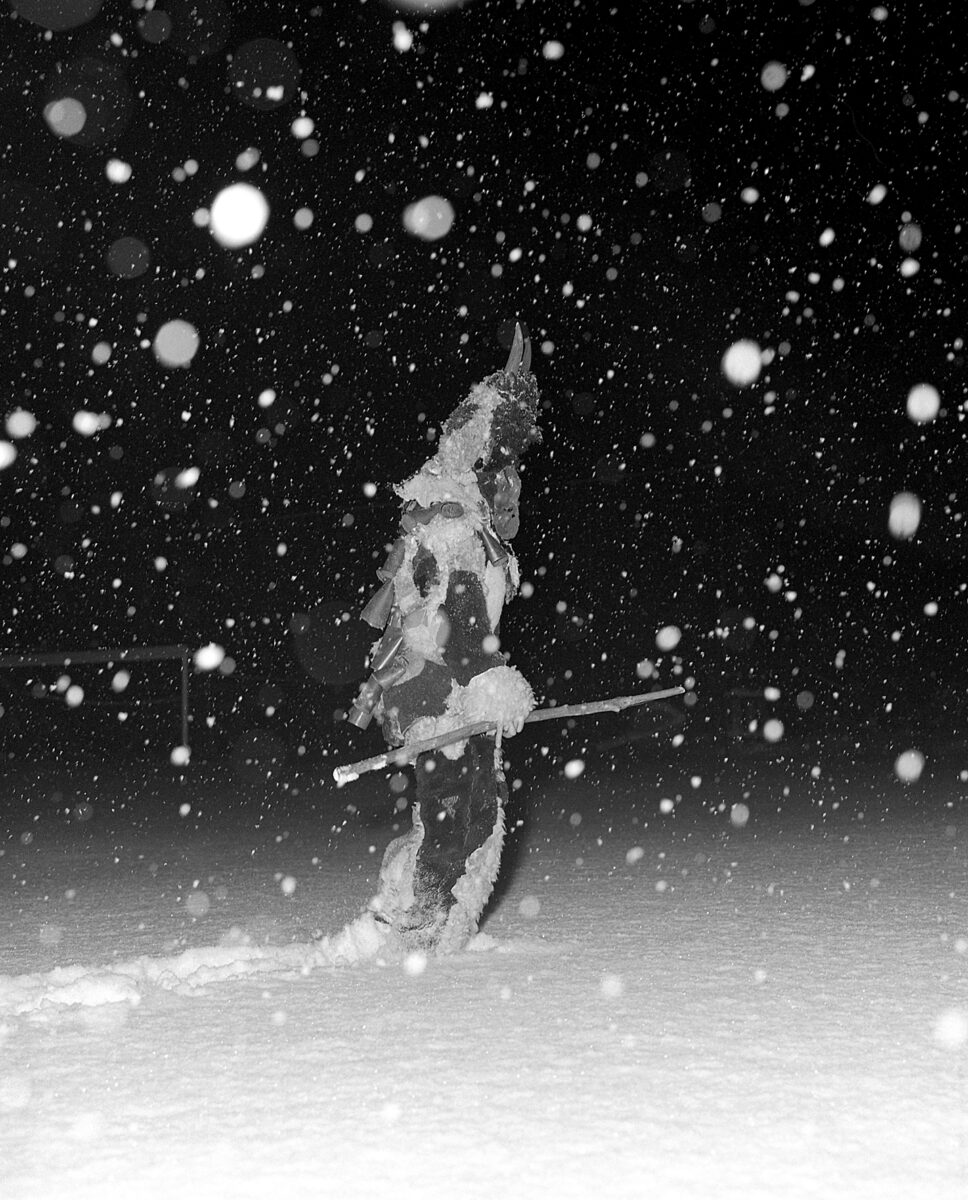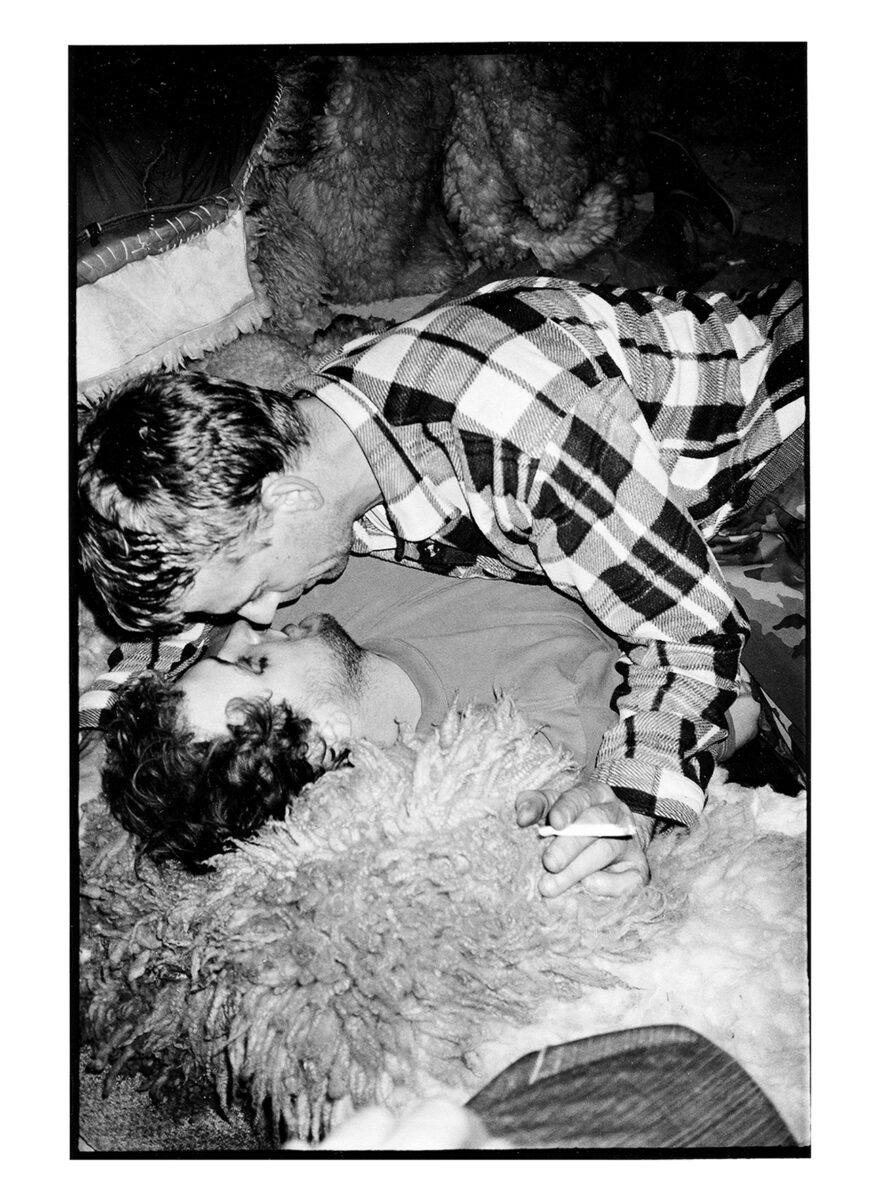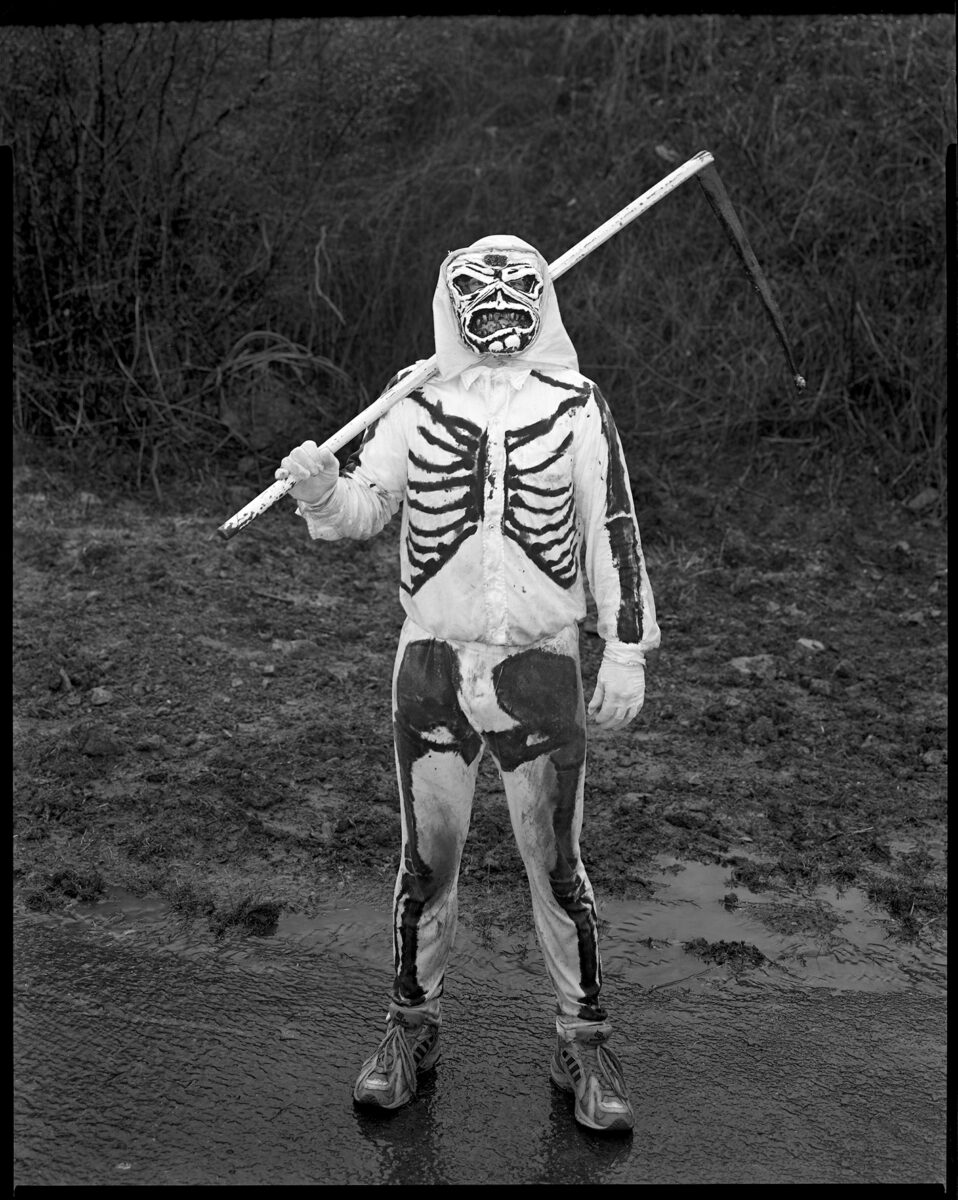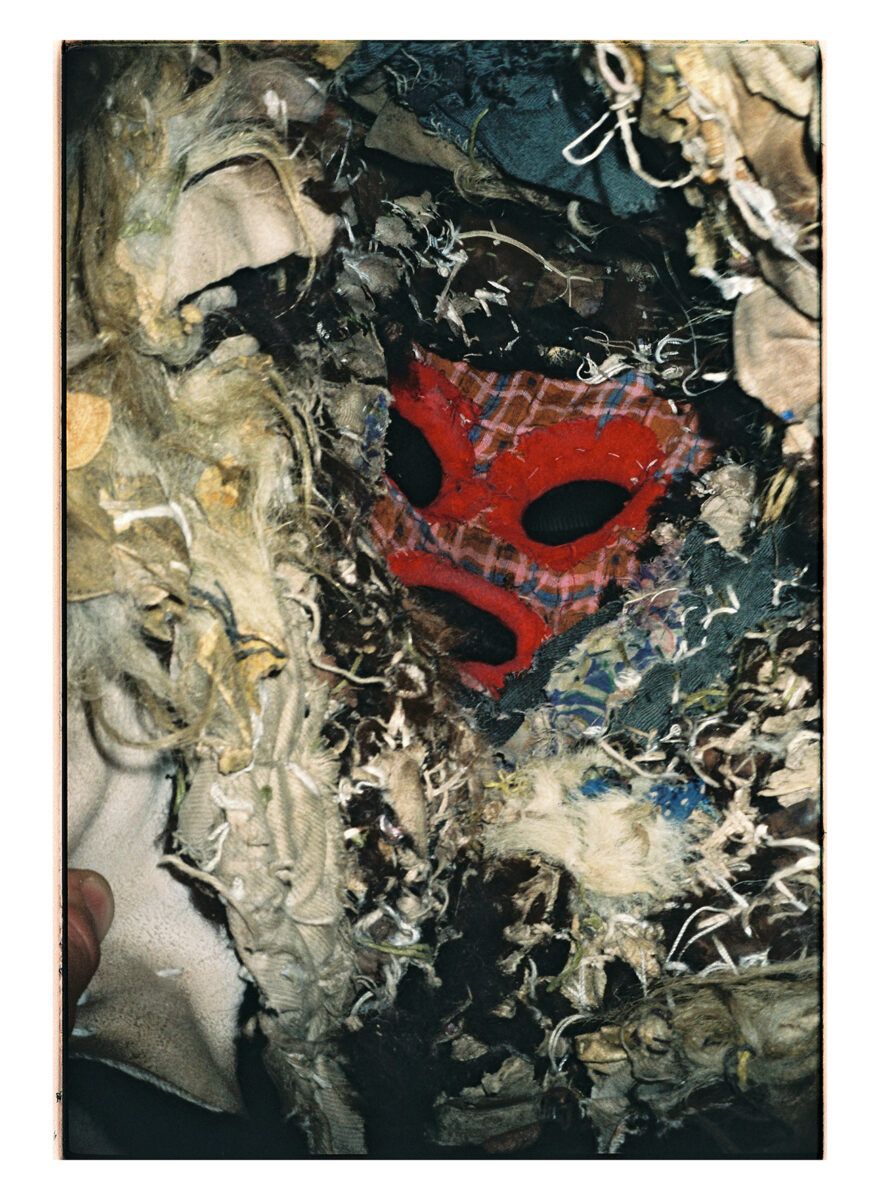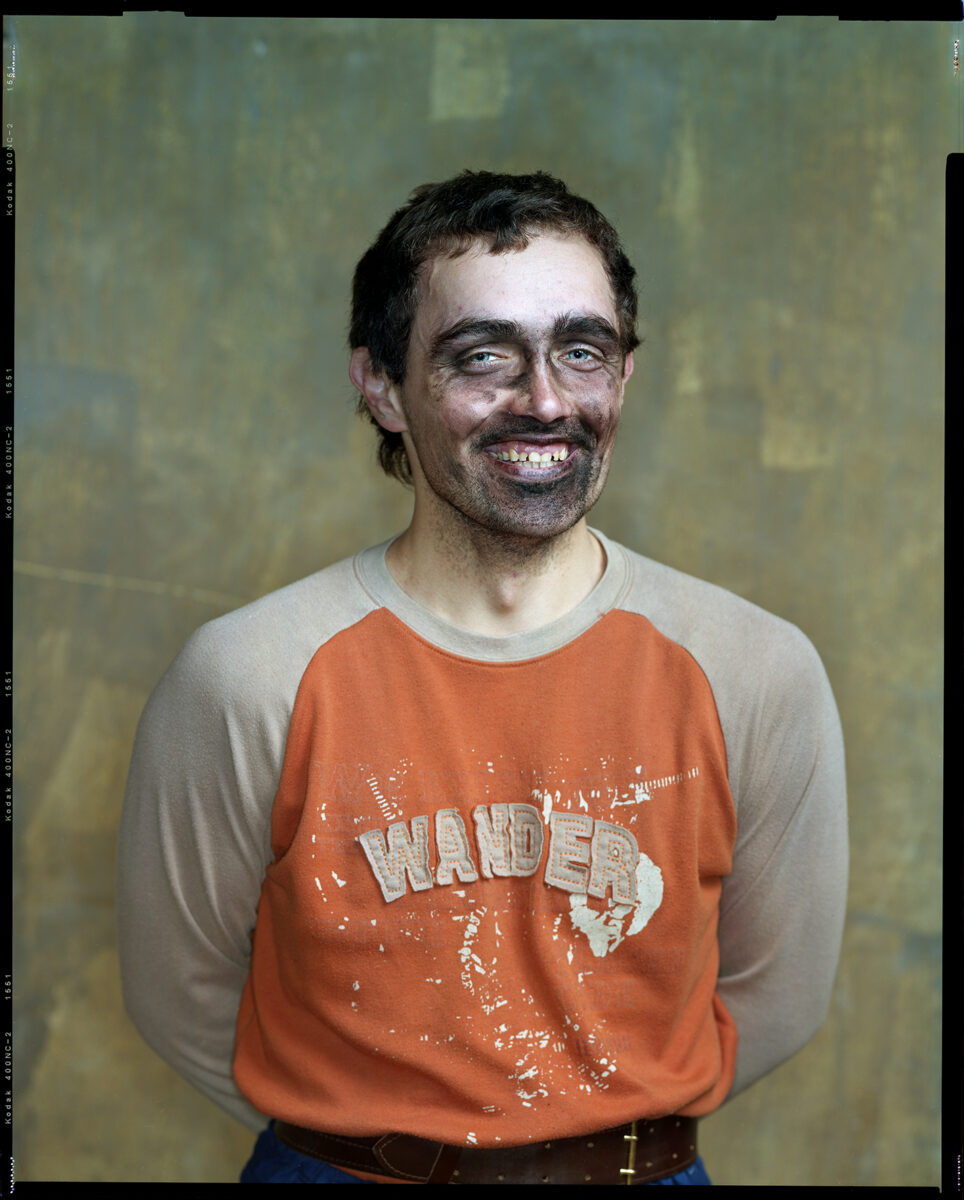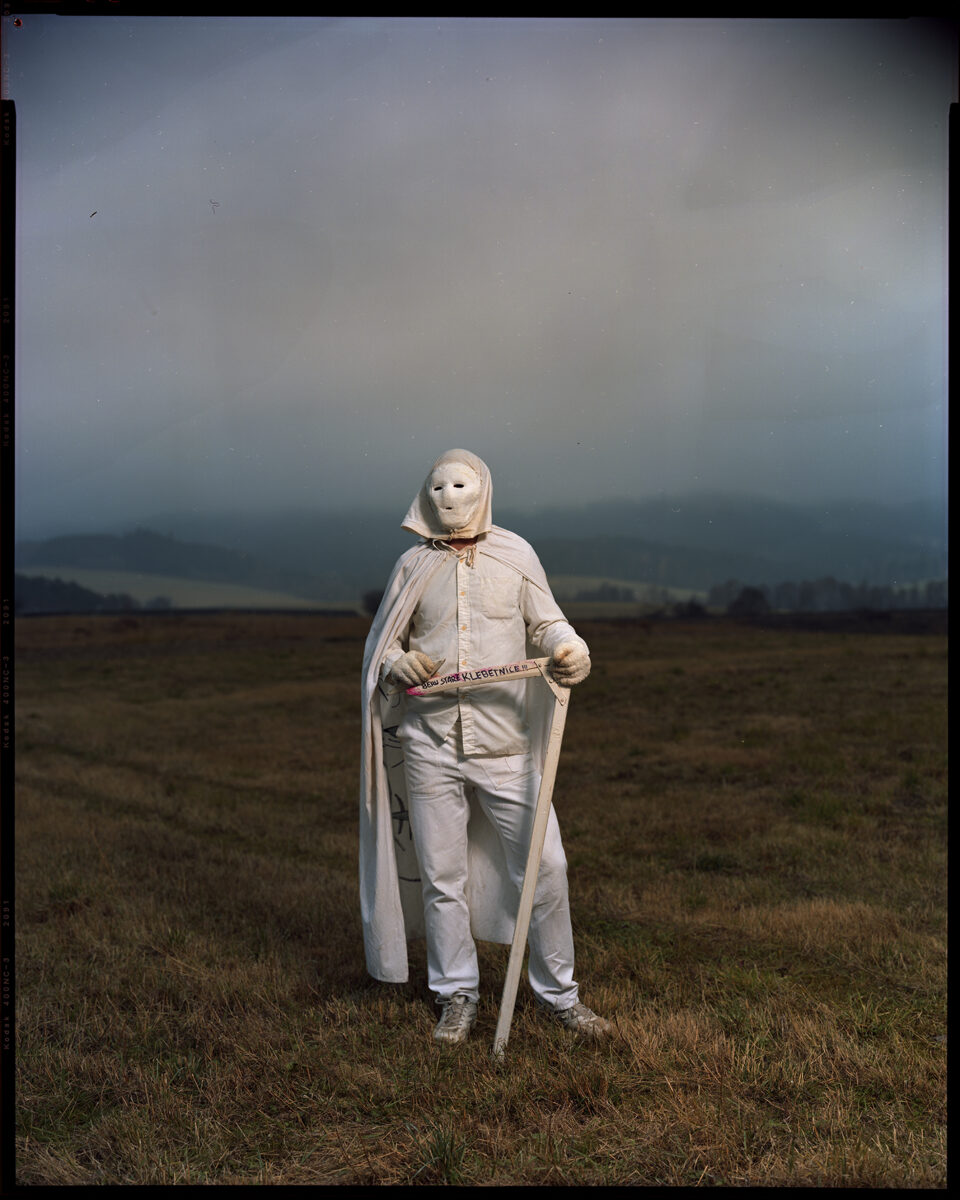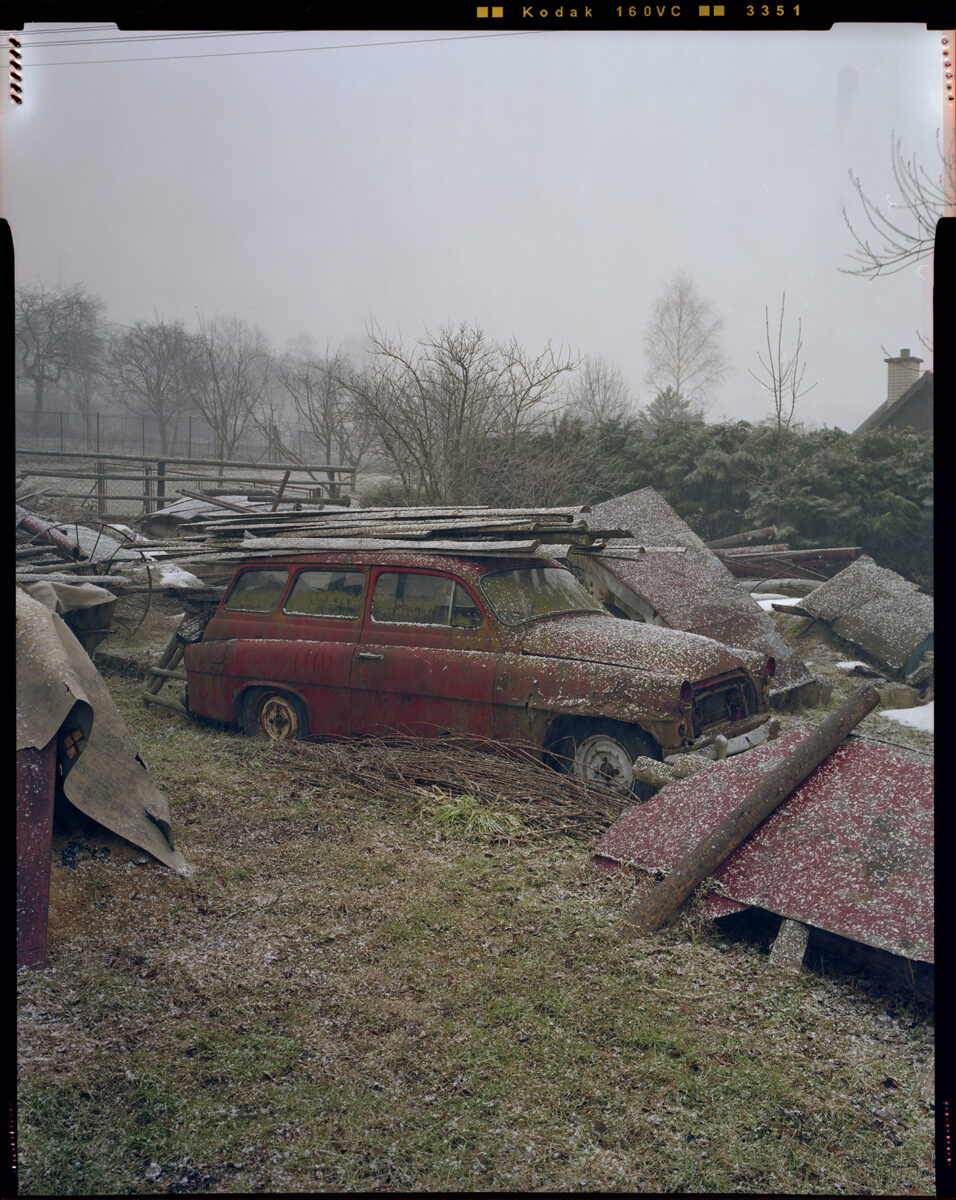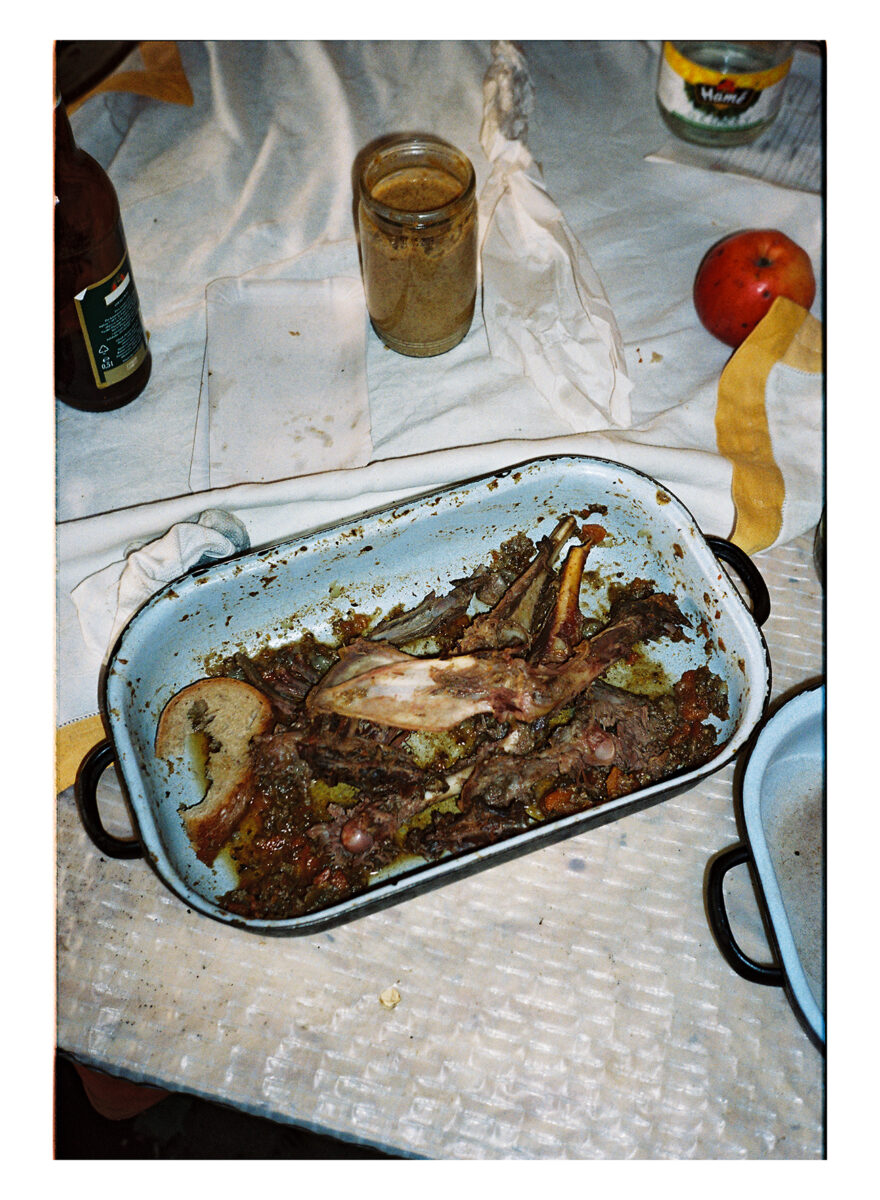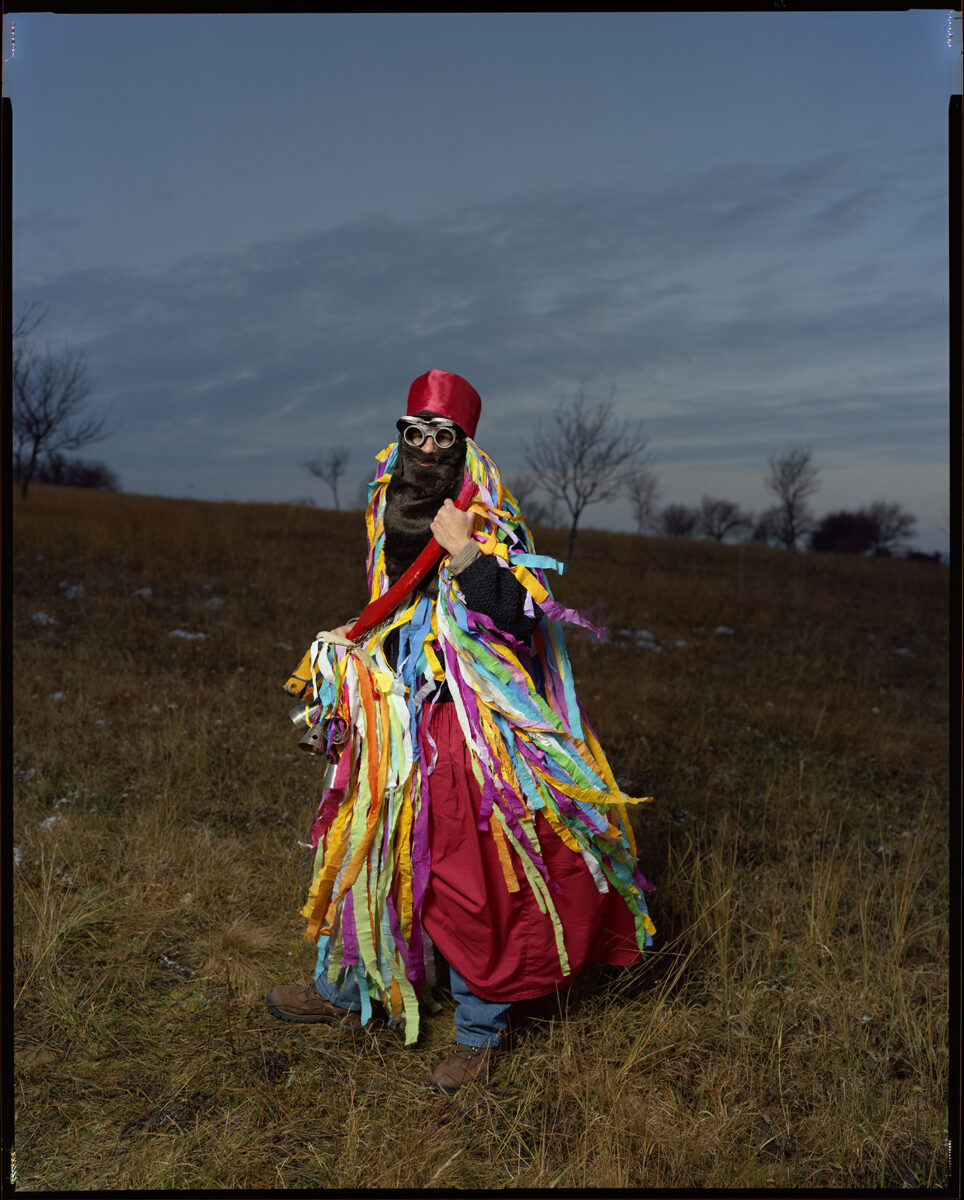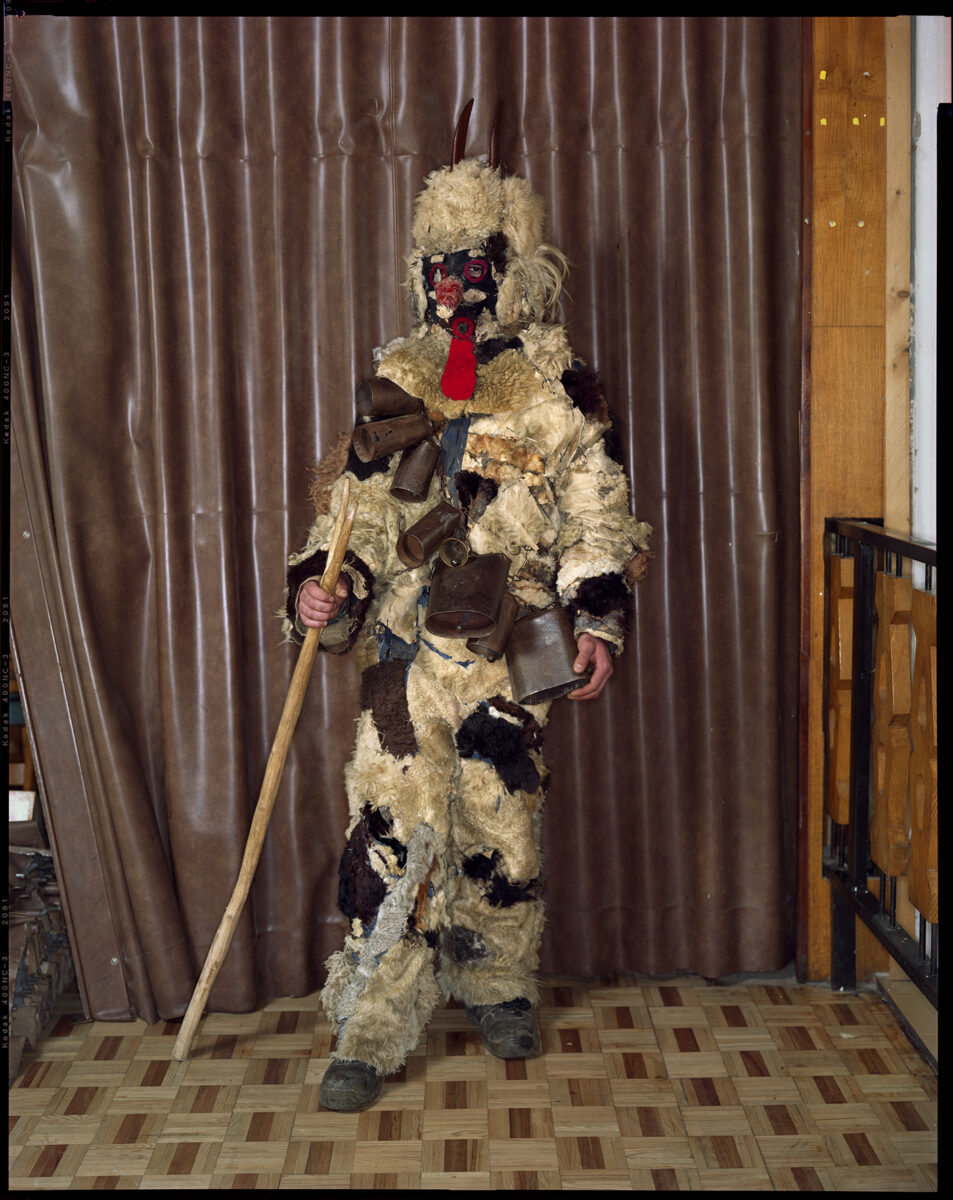Devils [St. Nicholas’ Flying]
Both sublime and scary, a stubborn aesthetic vision emerges from formally diverse documentation of a surviving Central European ritual, the wild practice of St. Nicholas processions
For more than two decades, artist-photographer Václav Jirásek has followed traditional St. Nicholas processions in the Hornolidečsko microregion on the Czech-Slovak border. Setting up a makeshift studio for his large-format camera in village dance halls and in gyms that double as dressing rooms for volunteer firefighters shedding their overalls for ancestral sheepskins. Car-chasing youngsters roaming the hills in mud-covered trainers, brandishing prongs, chained up in cowbells. Hiding in woodsheds with Deaths. Wolfing down speck with Horses.
The breadth of the material in ‘Devils’ allows Jirásek to draw several time-lapse lines, documenting the ongoing transformation of the 18th-century tradition of Saturnalia celebrations, as well as the life trajectories of its present-day participants and their families across several highland villages. The feast, which today involves masked adults trick-or-treating, pricking strangers with hedgehog skins, and Slivovitz-fuelled races over frozen fields, serves as visually-appealing as well as sinister reminder of life’s darker energies and proxy for tracing the development of the landscape and society of a region stretched between East and West, between modern and traditional paganism and Christianity, between past and present, humanity and bestiality.
The ‘Devils’’ three main elements – an ethnographic record of antique and contemporary masks, both primitive and exuberant; elevated 8×10 analog portraits of the humans behind them; and dynamic snapshot and video documentation of the behind-the-scenes and the often-frenzied action – formally challenge each other to ultimately coalesce into a complex artistic, performative, social, political, and religious image of certain irrepressible European currents at the beginning of the 21st century.


